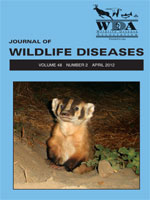Deer mice (Peromyscus maniculatus) are the main reservoir host for Sin Nombre virus, the primary etiologic agent of hantavirus pulmonary syndrome in North America. Sequential changes in weather and plant productivity (trophic cascades) have been noted as likely catalysts of deer mouse population irruptions, and monitoring and modeling of these phenomena may allow for development of early-warning systems for disease risk. Relationships among weather variables, satellite-derived vegetation productivity, and deer mouse populations were examined for a grassland site east of the Continental Divide and a sage-steppe site west of the Continental Divide in Montana, USA. We acquired monthly deer mouse population data for mid-1994 through 2007 from long-term study sites maintained for monitoring changes in hantavirus reservoir populations, and we compared these with monthly bioclimatology data from the same period and gross primary productivity data from the Moderate Resolution Imaging Spectroradiometer sensor for 2000–06. We used the Random Forests statistical learning technique to fit a series of predictive models based on temperature, precipitation, and vegetation productivity variables. Although we attempted several iterations of models, including incorporating lag effects and classifying rodent density by seasonal thresholds, our results showed no ability to predict rodent populations using vegetation productivity or weather data. We concluded that trophic cascade connections to rodent population levels may be weaker than originally supposed, may be specific to only certain climatic regions, or may not be detectable using remotely sensed vegetation productivity measures, although weather patterns and vegetation dynamics were positively correlated.
How to translate text using browser tools
1 April 2012
PREDICTION OF PEROMYSCUS MANICULATUS (DEER MOUSE) POPULATION DYNAMICS IN MONTANA, USA, USING SATELLITE-DRIVEN VEGETATION PRODUCTIVITY AND WEATHER DATA
Rachel A. Loehman,
Joran Elias,
Richard J. Douglass,
Amy J. Kuenzi,
James N. Mills,
Kent Wagoner
ACCESS THE FULL ARTICLE

Journal of Wildlife Diseases
Vol. 48 • No. 2
April 2012
Vol. 48 • No. 2
April 2012
deer mice
Hantavirus
MODIS
Peromyscus
prediction
satellites
trophic cascade




